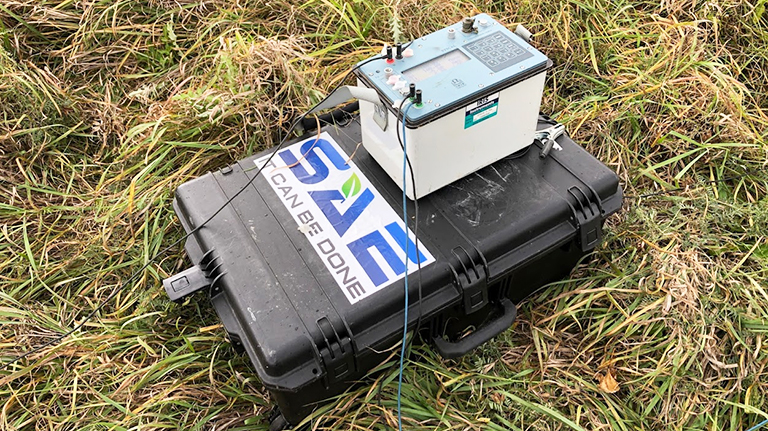
16 Jan Common Ground: How Cathodic Protection & Grounding Relate
Rylan Boyd, SAE Inc., explains grounding engineering and how relates to cathodic protection design through the utilization of innovative grounding tools and software.
Aside from the design and manufacturing of SAE’s EnvirAnode impressed current cathodic protection system, SAE has been designing and installing grounding systems for 20+ years. The engineering expertise in grounding has a direct relationship to the efficient design of a cathodic protection (CP) system. When designing a deep well or horizontal bed cathodic protection system, a primary objective is to ensure that the conductive backfill provides a low enough R-value (ohms) to enable the rectifier to achieve the desired anode current output.
The first step is to conduct a soil resistivity test utilizing a high-quality resistivity meter to perform a Schlumberger array data collection traverse. The data collection must be done to a depth exceeding the anticipated depth of a ground bed. The soil resistivity data in ohm-meters or ohm-centimeters is then entered into CDEGS software that calculates a layered soil model. The column or horizontal bed size is then entered into the software relative to the soil model to calculate the resultant R-value. Several iterations of this may be necessary to achieve the desired R-value which is typically 1 ohm. This procedure becomes critical in challenging, high soil resistivity areas where a greater depth of vertical anode beds or multiple beds may be necessary to achieve the desired current output. The extent of active column size required will then impact the number of anodes needed to meet the current output requirement.
This unique design approach prevents the installation of beds that are either unable to output enough current or require the over-driving of anodes in an attempt to achieve the desired output current which often can result in the premature failure of the bed. Seasoned cathodic protection specialists will utilize this design approach and associated engineering tools to increase and maximize the power of their cathodic protection budget to protect their assets.
For more information on SAE’s products and services click here.


